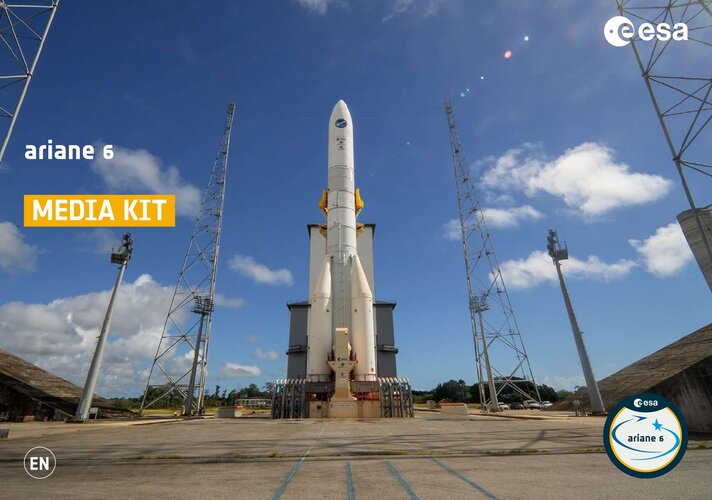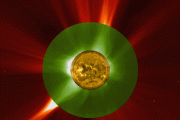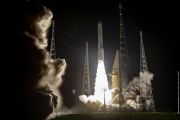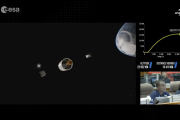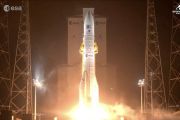
Copernical Team
China launches 3-member crew to its space station as it seeks to put astronauts on the moon by 2030
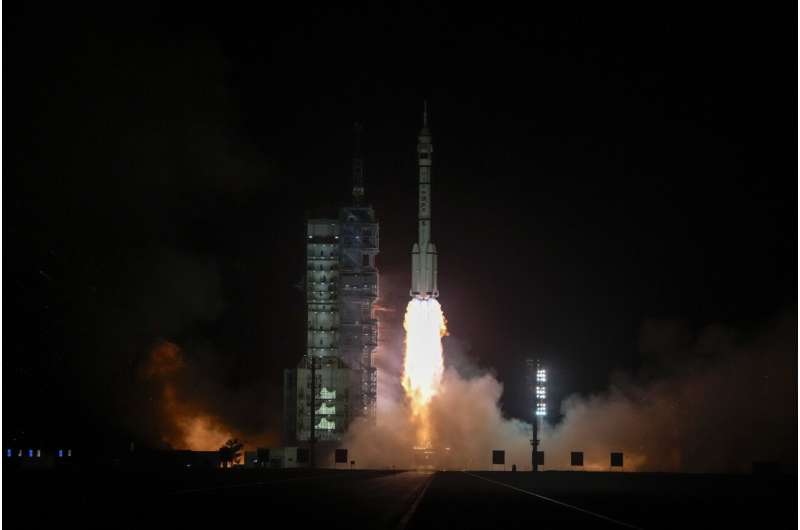
China launched a three-member crew to its orbiting space station on Thursday as part of its ambitious program that aims to put astronauts on the moon by 2030.
The Shenzhou-18 spacecraft lifted off from the Jiuquan Satellite Launch Center on the edge of the Gobi Desert in northwestern China atop a Long March 2-F rocket at 8:59 p.m. (1259 GMT).
The spacecraft's three-member crew will relieve the Shenzhou-17 team, which has been staffing China's Tiangong space station since last October.
The Mars Sample Return mission has a shaky future, and NASA is calling on private companies for backup
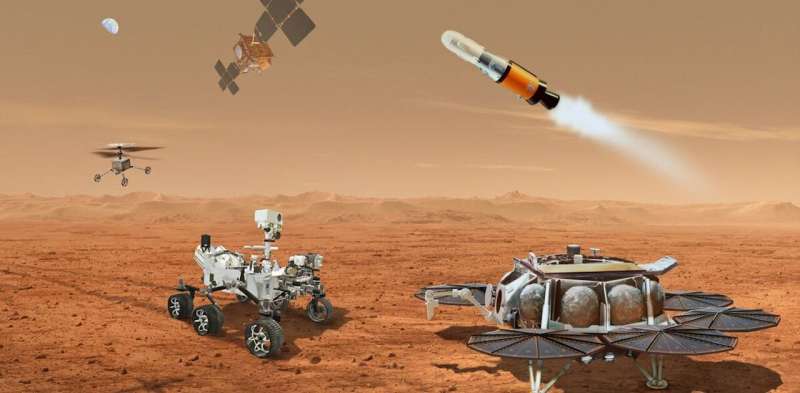
A critical NASA mission in the search for life beyond Earth, Mars Sample Return, is in trouble. Its budget has ballooned from US$5 billion to over $11 billion, and the sample return date may slip from the end of this decade to 2040.
The mission would be the first to try to return rock samples from Mars to Earth so scientists can analyze them for signs of past life.
NASA Administrator Bill Nelson said during a press conference on April 15, 2024, that the mission as currently conceived is too expensive and too slow. NASA gave private companies a month to submit proposals for bringing the samples back in a quicker and more affordable way.
As an astronomer who studies cosmology and has written a book about early missions to Mars, I've been watching the sample return saga play out.
NASA astronauts arrive for Boeing's first human spaceflight
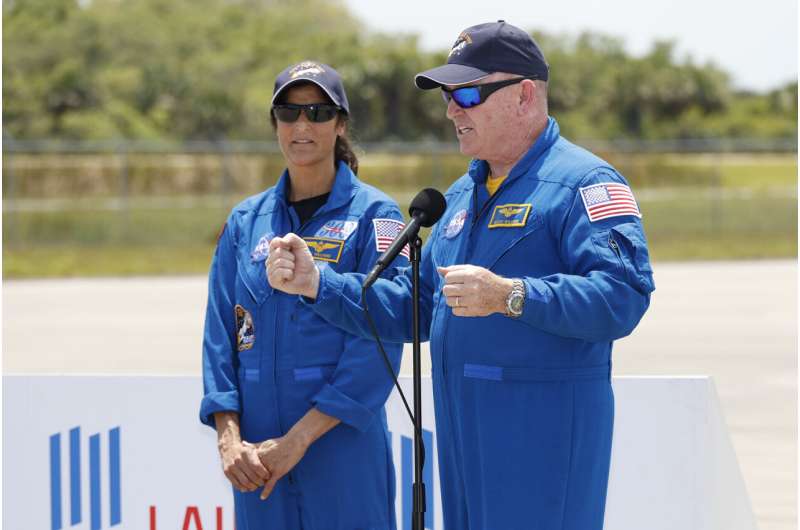
The two NASA astronauts assigned to Boeing's first human spaceflight arrived at their launch site Thursday, just over a week before their scheduled liftoff.
Young Professionals’ YPSat headed to Ariane 6
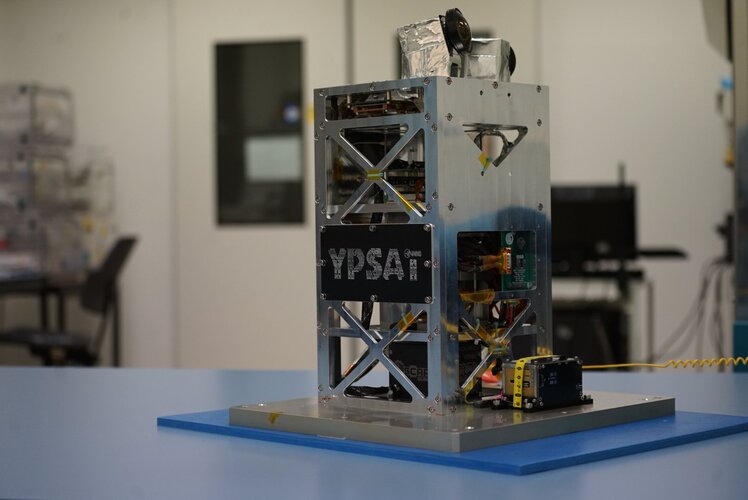
ESA’s YPSat has been shipped to Arianespace. Following a series of successful tests confirming its readiness for deployment, the payload is now headed to Europe’s Launch Site in French Guiana. The goal of YPSat is to capture all the key phases of Ariane 6's inaugural flight.
First Ariane 6 booster gets lift to launch zone
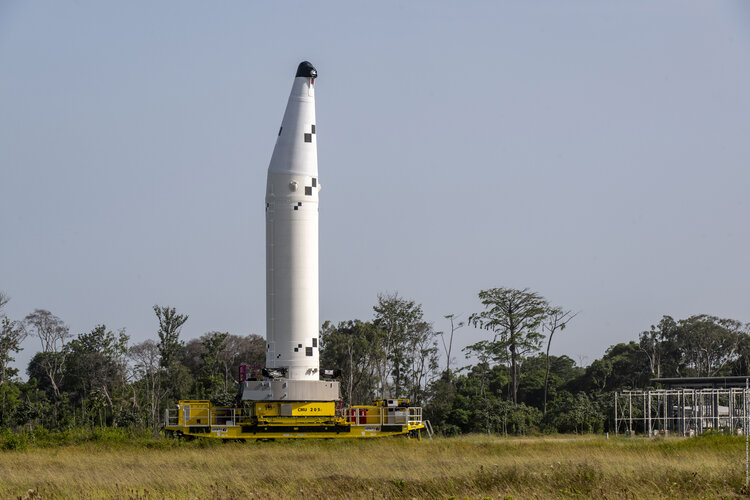 Image:
First Ariane 6 booster gets lift to launch zone
Image:
First Ariane 6 booster gets lift to launch zone China expands Space Station Program to include international astronauts
 China has announced its intention to expand the participation of foreign astronauts and space tourists in missions to its space station, emphasizing inclusivity and cooperation in its space endeavors. According to Lin Xiqiang, spokesman for the Shenzhou XVIII mission, this initiative aims to diversify the backgrounds of those participating in upcoming space station flights.
Three groups of
China has announced its intention to expand the participation of foreign astronauts and space tourists in missions to its space station, emphasizing inclusivity and cooperation in its space endeavors. According to Lin Xiqiang, spokesman for the Shenzhou XVIII mission, this initiative aims to diversify the backgrounds of those participating in upcoming space station flights.
Three groups of China's Chang'e 7 lunar mission will host international instruments
 China's upcoming Chang'e 7 lunar exploration mission is set to include six scientific instruments from six different countries and one international organization, as announced by the China National Space Administration (CNSA) during the recent China Space Day celebration in Wuhan, Hubei Province.
Scheduled for launch in 2026, the Chang'e 7 mission will focus on investigating the lunar sout
China's upcoming Chang'e 7 lunar exploration mission is set to include six scientific instruments from six different countries and one international organization, as announced by the China National Space Administration (CNSA) during the recent China Space Day celebration in Wuhan, Hubei Province.
Scheduled for launch in 2026, the Chang'e 7 mission will focus on investigating the lunar sout Chang'e 7 mission set for lunar south pole survey in 2026
 The Chang'e 7 robotic mission, under the China National Space Administration, plans to deploy six international science payloads to the moon's south pole by 2026. This initiative marks a significant phase in China's ongoing lunar exploration efforts.
Announced in Wuhan, the capital of Hubei province, the mission aims to conduct comprehensive surveys and analyses of the lunar south pole's s
The Chang'e 7 robotic mission, under the China National Space Administration, plans to deploy six international science payloads to the moon's south pole by 2026. This initiative marks a significant phase in China's ongoing lunar exploration efforts.
Announced in Wuhan, the capital of Hubei province, the mission aims to conduct comprehensive surveys and analyses of the lunar south pole's s Japan's SLIM survives 3rd lunar night, surprising designers
 Japan's moon lander has survived a third lunar night, something that surprised even its designers, as it continued to take snapshots and probe the satellite's surface, officials said on Wednesday.
The Smart Lander for Investigating the Moon, or SLIM, came back to life after emerging from the darkness and sent signals to the Japan Aerospace Exploration Agency.
"Last night (the nig
Japan's moon lander has survived a third lunar night, something that surprised even its designers, as it continued to take snapshots and probe the satellite's surface, officials said on Wednesday.
The Smart Lander for Investigating the Moon, or SLIM, came back to life after emerging from the darkness and sent signals to the Japan Aerospace Exploration Agency.
"Last night (the nig 
